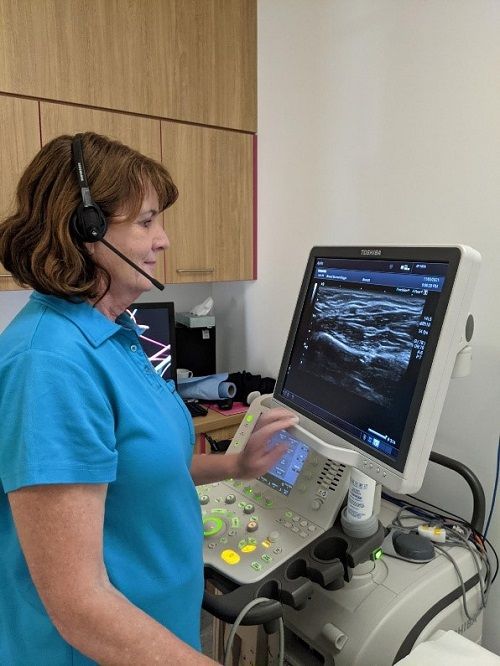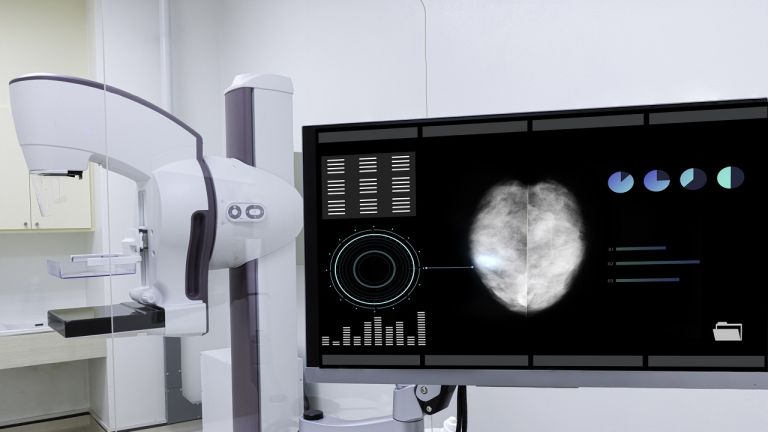About BreastScreen NSW
Breast cancer is the most commonly diagnosed cancer in Australian women. The BreastScreen NSW program aims to detect breast abnormalities early. The program actively invites women between 50 and 74 years for screening mammogram every two years, with a follow up assessment if any abnormalities are found. The service is accessible to women age 40-49 and over 75 years.
BreastScreen NSW assessments occur at a multidisciplinary clinic. Clients have diagnostic tests including mammography, ultrasound, clinical examination and needle biopsy to assess the abnormality found at screening. BreastScreen NSW must aim to complete the follow up of clients with abnormalities within standardised nationally governed timeframes to make sure that women receive results in a timely fashion.
Outside of metropolitan areas it may not always be possible to have a suitably qualified Breast Radiologist available on site to achieve the required timeframes, while maintaining the same high-quality level of care. This was an issue that the BreastScreen NSW team wanted to address.
Trialling a virtual model of care
In 2016, BreastScreen NSW participated in a national research project, commissioned by BreastScreen Australia (BSA) and the National Quality Management Committee, to evaluate a service delivery model for virtual radiology. The research was undertaken by James Cook University.
The research project found that the virtual radiologist assessment model is safe and effective. It is clinically equivalent to the onsite assessment model in terms of cancer detection and has significantly improved timeliness to assessment and recommendation for care. This model has minimised the anxious waits for women recalled for further assessment. From the client’s perspective, there was no greater time to wait for the assessment outcome conducted under the virtual radiologist model compared to face to face assessment.
‘Since 2016 our service has improved compliance with the National Accreditation Standard for time from a screening mammogram to assessment outcome. Now more than 91% of women are assessed within 28 days of their screening mammogram. Utilizing the remote model has contributed to this result.'
Ensuring equitable access for women in regional NSW
As part of this study, BreastScreen NSW set up a virtual assessment clinic for women in greater southern NSW. The assessment radiologist is remote from the assessment clinic and has access to a reporting workstation with videoconference capability.


Improving experiences of care
Clients attending virtual assessment clinics have provided feedback to the greater southern service. More than 95% of women felt their assessment clinic attendance was the same as if they had attended a clinic with an onsite radiologist. Feedback regarding perceived anxiety suggested it was no different from wait times to attend regular assessment clinics and during the regular assessment clinic process.
Clients reported high satisfaction with their clinic experiences, high confidence in care being received and positive feedback regarding the support systems offered. 92% of clients were very satisfied with the virtual clinic, 8% were satisfied. The majority of clients had no preference for either the onsite or remote model, indicating their acceptance of the virtual assessment clinic model.
Patient quotes
- ‘I felt comfortable. The facilities are great. I have had a good, positive experience.’
- ‘It was all handled quickly. It reduced my anxiety getting an appointment for the biopsy promptly as this was my main concern.’
- ‘I was happy with everything.’

Table 1: BSA National Accreditation Standard 4.2.1 more than 90% of women should be assessed within 28 days of their screening attendance
| CY 2015/16 | CY 2019/20 | June 1 to Dec 31, 2020 |
|---|---|---|
| 2423 women were recalled for further imaging | 2893 women were recalled | 11% of women recalled in 2020 were seen via the remote radiologist model |
| 87.21% of women were assessed within 28 days of their screening mammogram | 91.19% of women were assessed within 28 days of screening | 91.98% of women were assessed within 28 days |
| It took the service 31 days to reach the standard of 90% (State average 34 days) | The service reached the standard within 28 days (State average 31 days) | The service reached the standard within 27 days (State average 29 days) |
| 92.53% of women were offered an appointment within the timeframe | 96.27% of women were offered an appointment within 28 days | 96.07% of women were offered an appointment within 28 days |
Client acceptance of the model supports continuation of the virtual assessment clinic at Queanbeyan and expansion to other sites across the state.
The findings from this research can inform future virtual care, particularly where key health care team members are working remotely.
